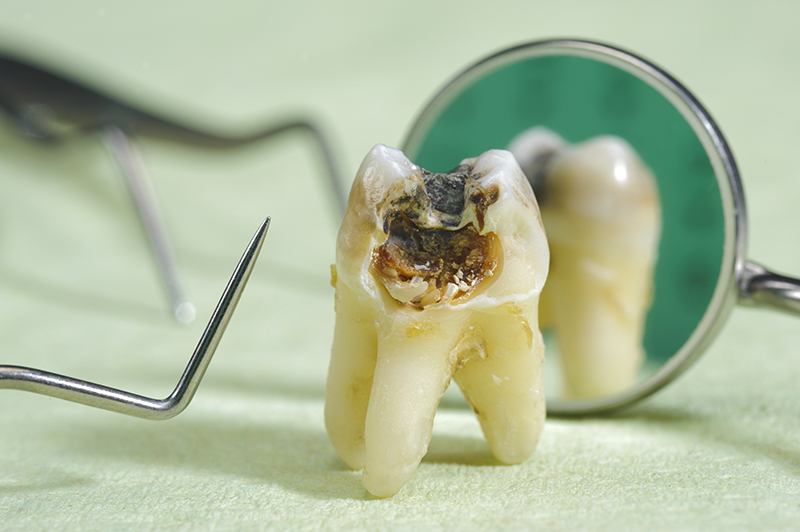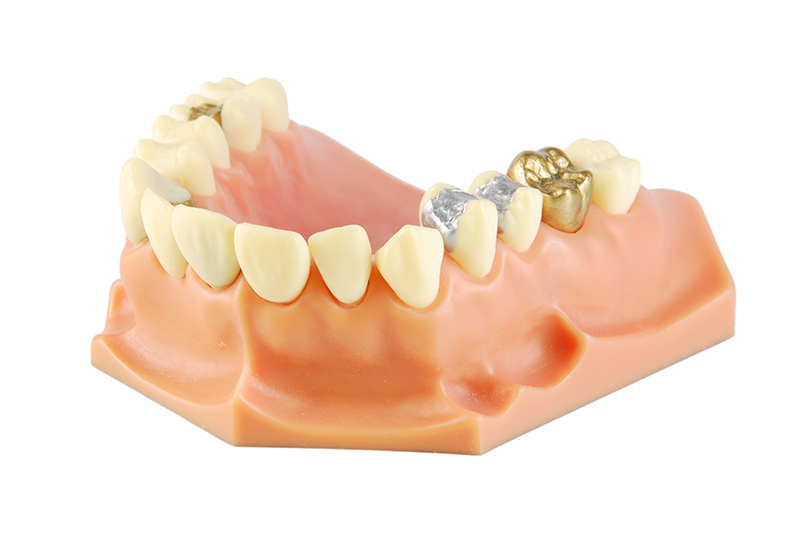What Are Dental Fillings?
Fillings are a common dental solution for repairing damage to teeth due to a cavity. Dental fillings do exactly what their name implies—they fill in the cavity. This is done to prevent further decay and damage to the tooth to avoid extraction.
Fillings are typically used in cases such as:
- Tooth decay that has created a hole in the tooth enamel but has not impacted the inner pulp where blood vessels and nerves are located
- Dental trauma resulting in a broken tooth that possibly makes the tooth vulnerable to decay
- To shore up ground-down or eroded teeth


The Procedure
Before a filling is performed, the dentist administers an injection of a local anesthetic to numb the gums surrounding the affected tooth. The tooth itself is then inspected to assess the needed repair. If there is evidence of decay, it has to be removed, usually by drilling, scraping out the decayed part, and dried. Filling material is then used to restore its shape and integrity; patients are asked to bite down afterward for the dentist to ensure that it provides a comfortable fit.
Types Of Dental Fillings
A variety of materials are commonly used to create dental fillings—each having its own unique characteristics. Here are just a few common ones.
Composite resin is a combination of glass particles and plastic resin and is often referred to as white, plastic, or tooth-colored fillings. These fillings replace the top of the teeth and often resemble the original enamel. They also release small amounts of fluoride to reduce the chance of additional decay.
Silver amalgam is a mixture of silver alloy and mercury that is frequently used for its strength and safety as it is approved by the WHO and Dental Federation as well.
Glass ionomer cement hardens on its own from glass, and organic acid, and is color matched to the color of your tooth.
Resin ionomer cement is similar to glass ionomer except the base is a polymer instead of glass. It cures to a solid state when exposed to blue light.
Porcelain may be used as a stain-resistant option that also is much stronger than composite fillings.

More Services
A perfect smile guaranteed
Epic Dental Center provides a comprehensive solution for dental care that your entire family can trust. Whether it’s something as routine as a normal checkup or something complex such as dental implants—you can trust Epic.
Dental Fillings
Fillings are a common dental solution for repairing damage to teeth due to a cavity. Dental fillings do exactly what their name implies—they fill in the cavity. This is done to prevent further decay and damage to the tooth to avoid extraction...
Dental Crowns
Dental crowns are a term in dentistry that is familiar to most patients although some refer to them as caps. In dentistry, the term crown is used in a couple of ways. Each tooth’s crown refers to the part of the tooth that sticks out from the gums...
Dental Bridges
A bridge is a dental treatment used to replace consecutive missing teeth. Traditionally, it consists of two or more crowns on either side of a false tooth referred to as a pontic. Bridges are categorized according to the number of units...
Root Canal
Sometimes, bacteria gets out of control in a tooth and actually penetrates to the pulp layer of the tooth. This causes a serious infection that can also lead to an abscess—both potentially life-threatening conditions if left untreated....
Dentures
Dentures are a removable solution for missing teeth that offers some functionality and cosmetic improvement when you’ve lost your teeth. There are two types of dentures: full and partial. Each has its own advantages and disadvantages...
Dental Implants
Implants offer a more natural approach to replacing missing teeth than dentures can provide. The biggest selling point for dental implants is that they are a true replacement. In every sense of the word replacement, dental implants are biocompatible...
Dental Bridges
A bridge is a dental treatment used to replace consecutive missing teeth. Traditionally, it consists of two or more crowns on either side of a false tooth referred to as a pontic. Bridges are categorized according to the number of units...
Root Canal
Sometimes, bacteria gets out of control in a tooth and actually penetrates to the pulp layer of the tooth. This causes a serious infection that can also lead to an abscess—both potentially life-threatening conditions if left untreated....
Dentures
Dentures are a removable solution for missing teeth that offers some functionality and cosmetic improvement when you’ve lost your teeth. There are two types of dentures: full and partial. Each has its own advantages and disadvantages...
Wisdom Teeth Removal
Wisdom teeth, often referred to as third molars, are the last of your adult set of teeth to come in. Some people’s wisdom teeth come in with no issues at all and never become an issue. However, some people have issues with them erupting...
Dental Implants
Implants offer a more natural approach to replacing missing teeth than dentures can provide. The biggest selling point for dental implants is that they are a true replacement. In every sense of the word replacement, dental implants are biocompatible...
Invisalign
Invisalign is an orthodontic treatment option for slightly misaligned teeth. It straightens your teeth without the use of metal brackets or wires. Instead, Invisalign uses a series of clear, custom-made aligners that gradually move your teeth into the desired position....

